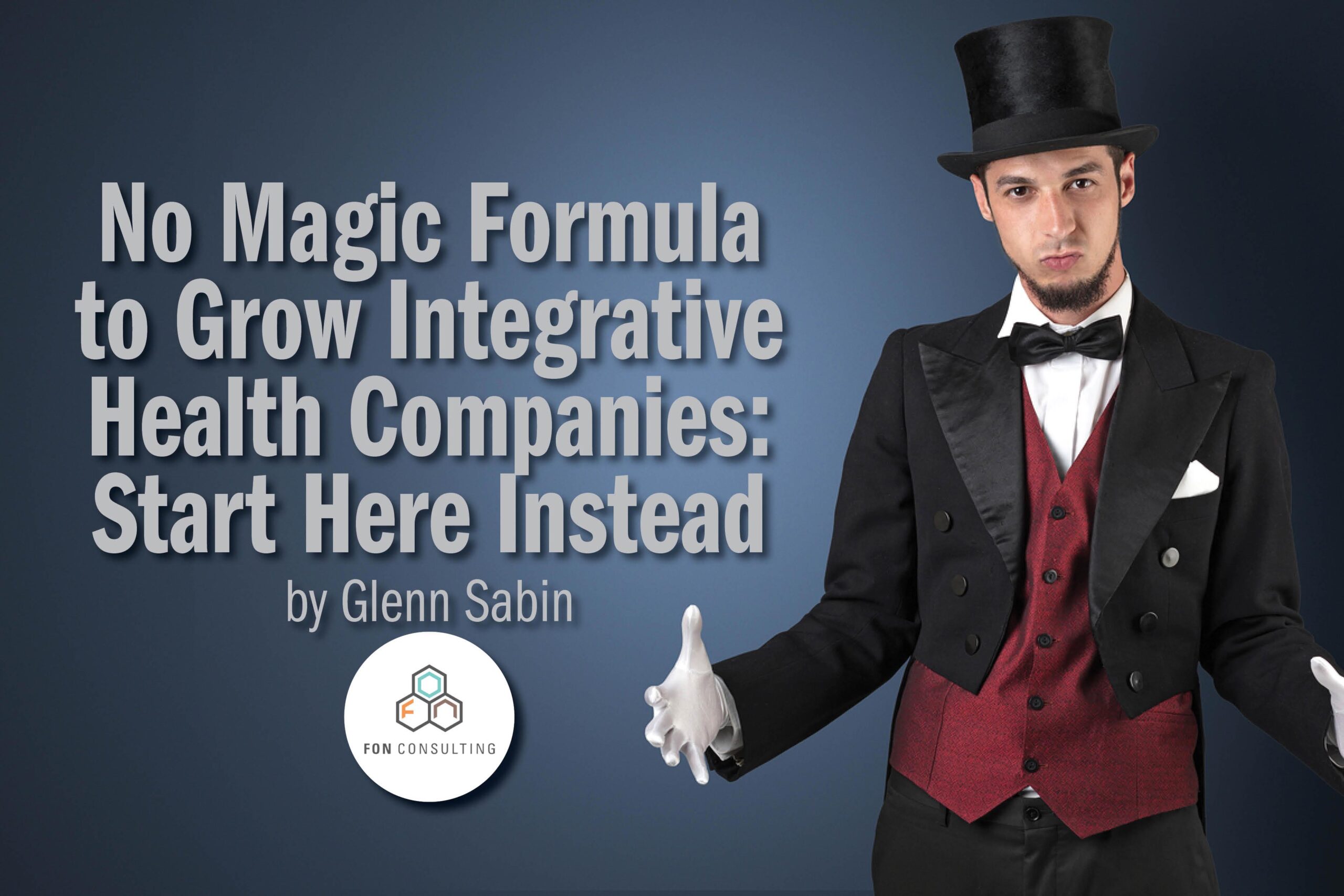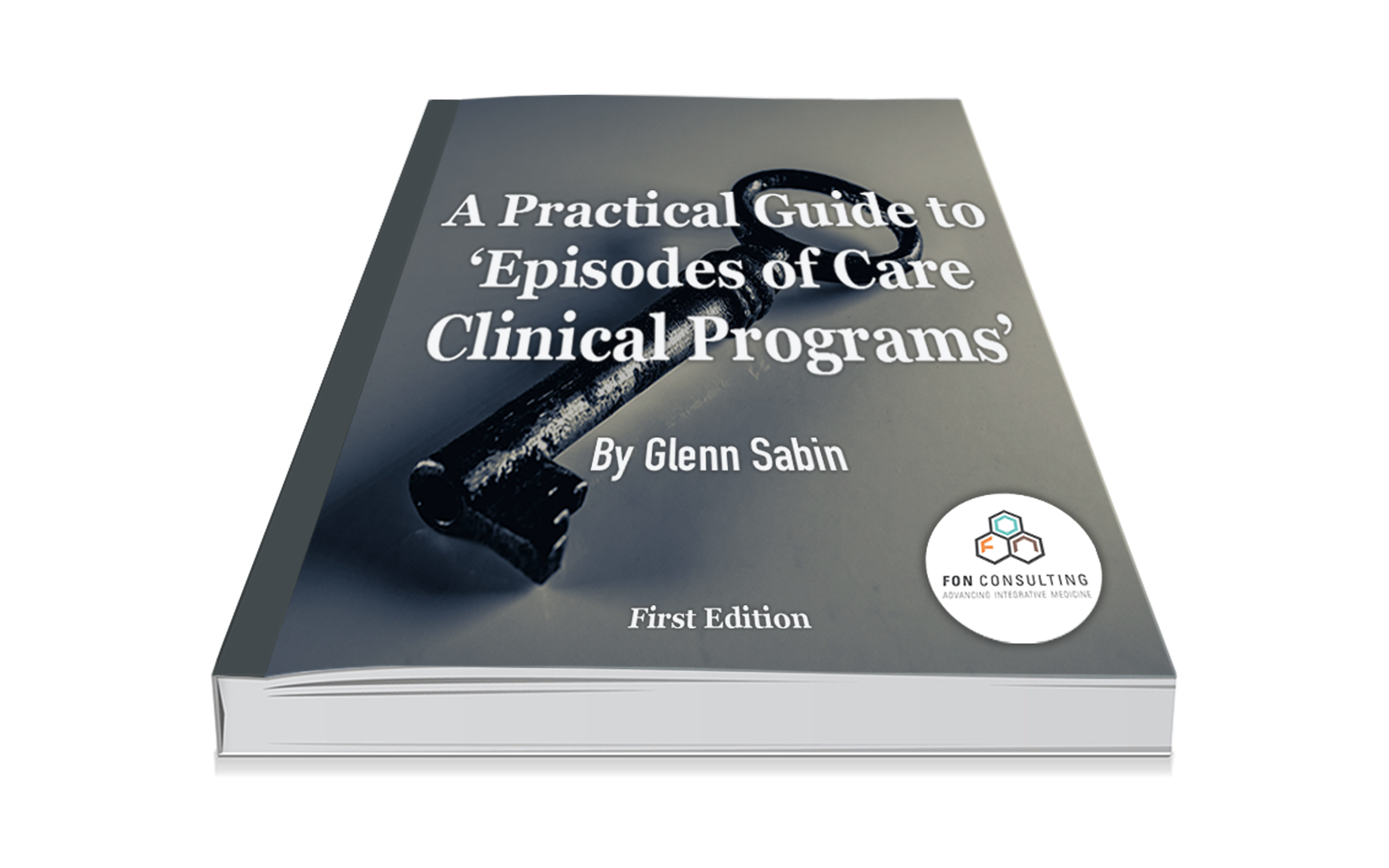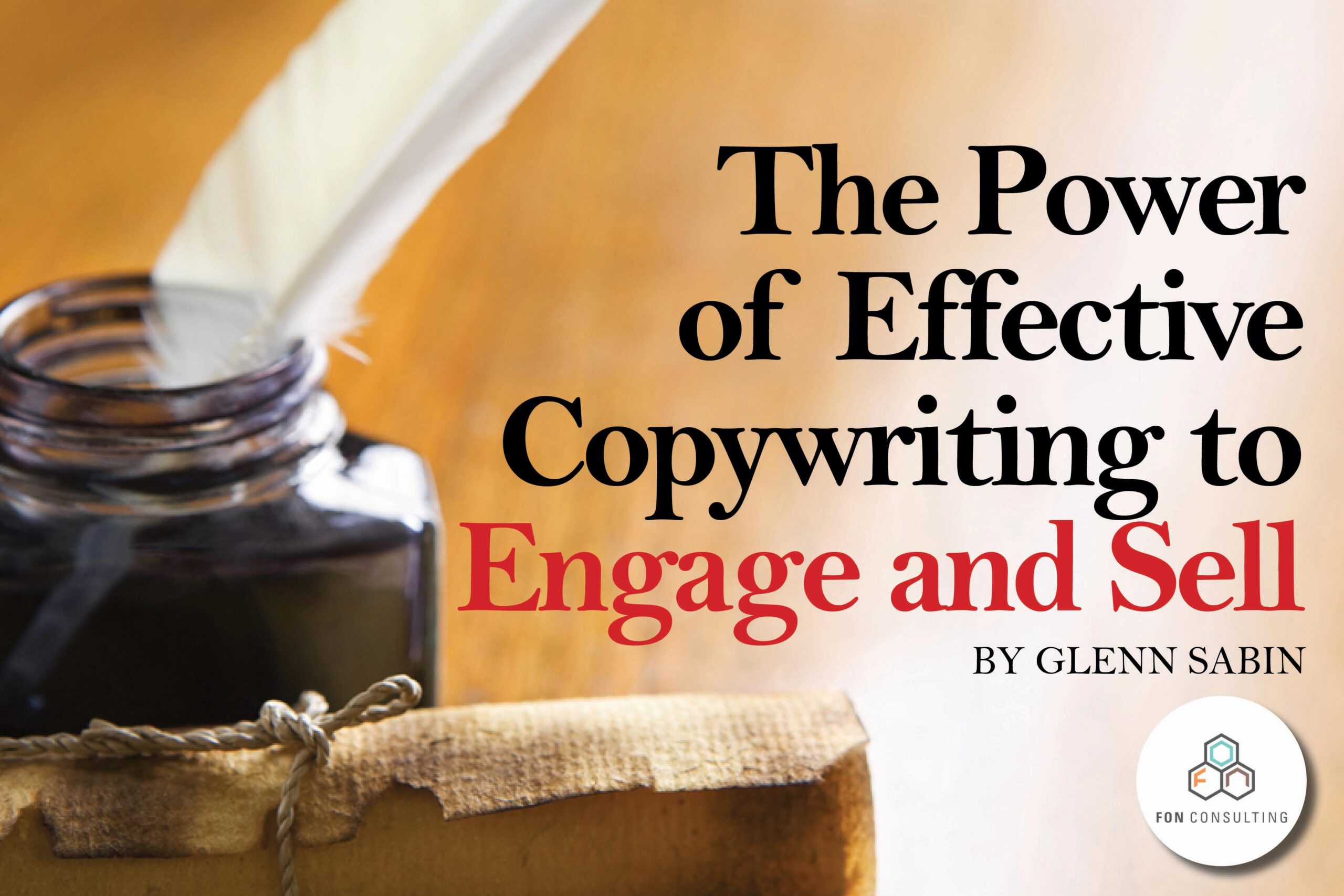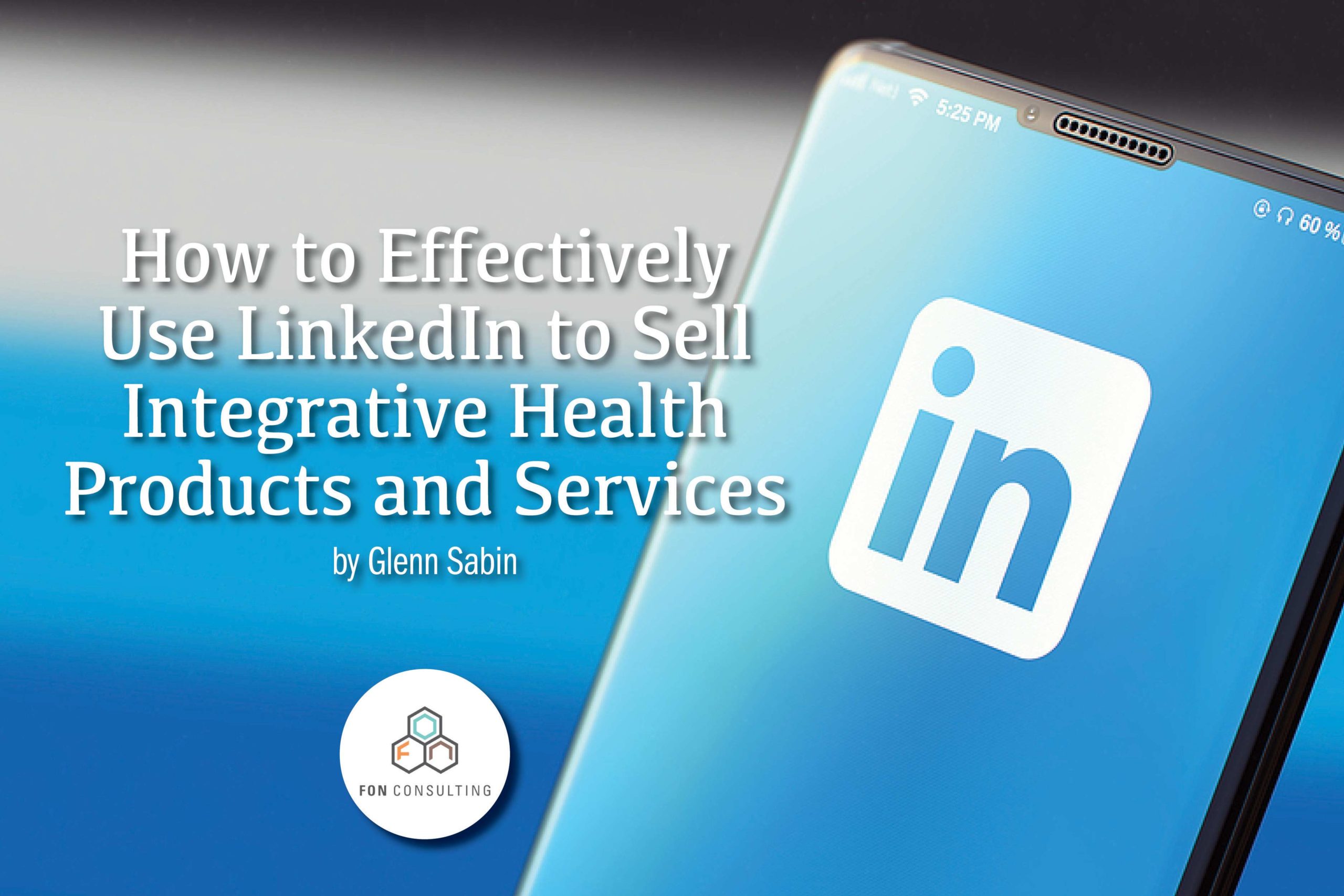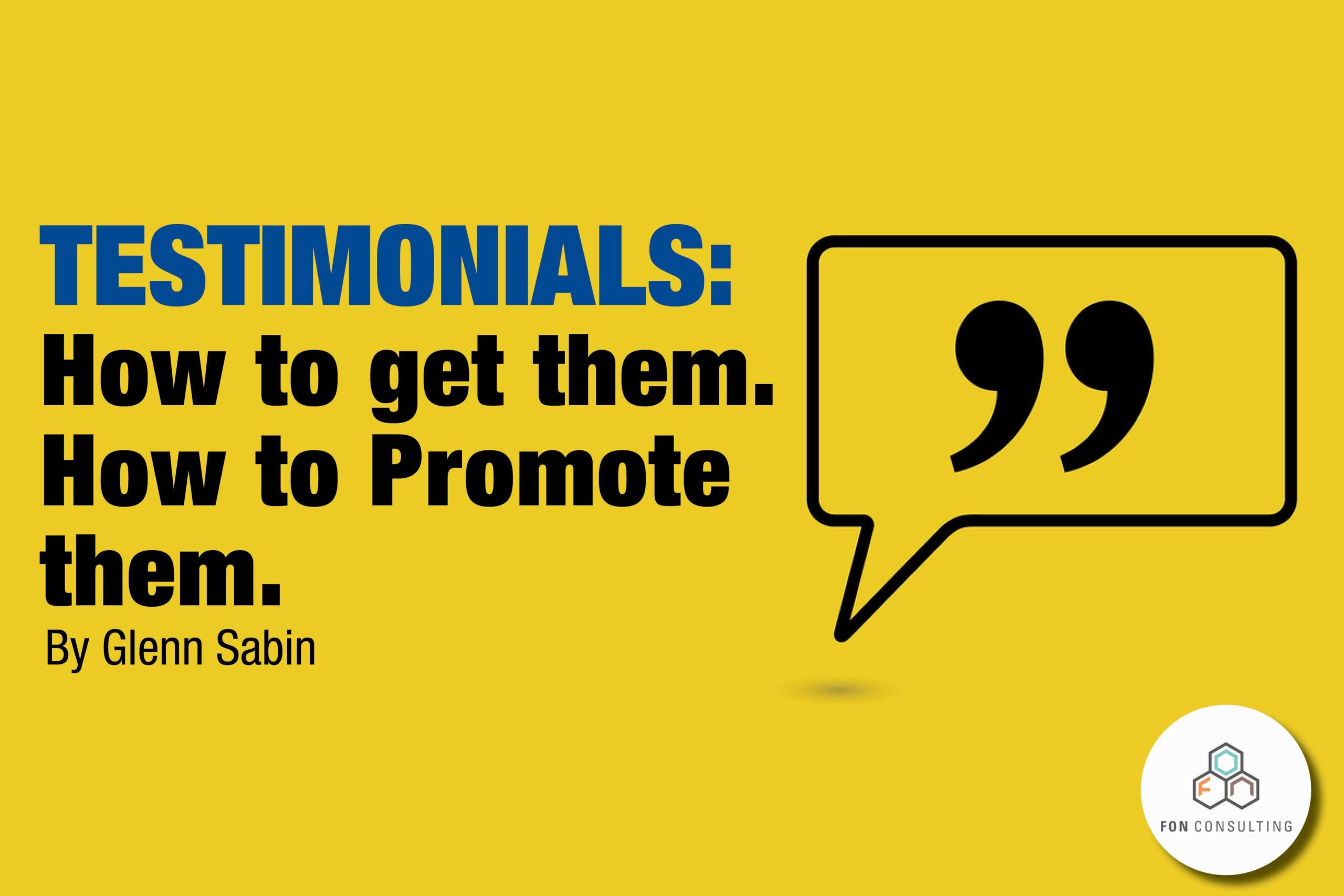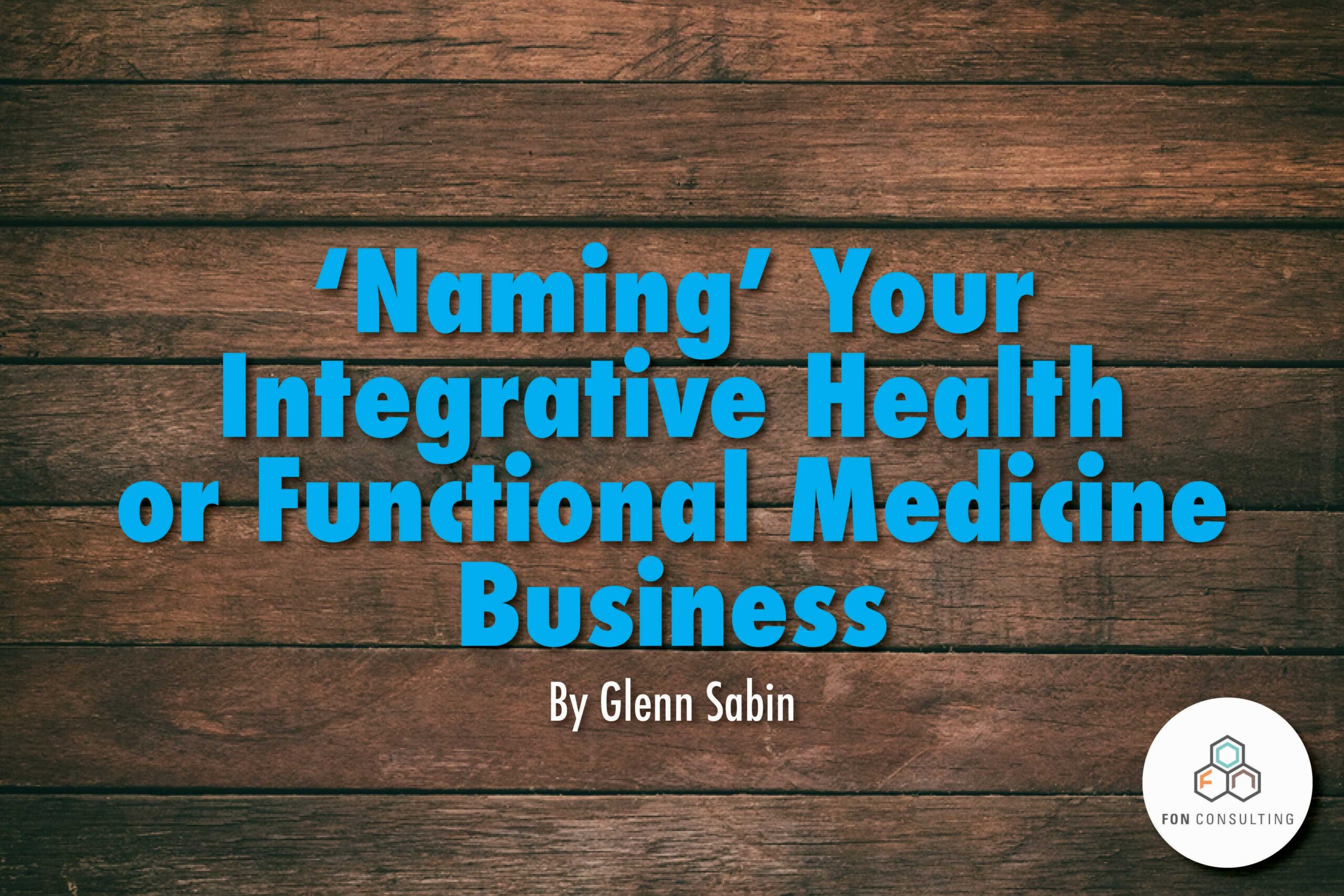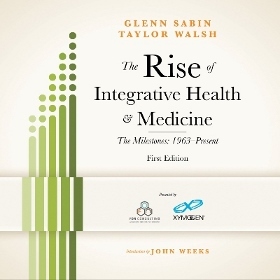Your Integrative Health Brand and Platform: Invest or Fail
By Glenn Sabin
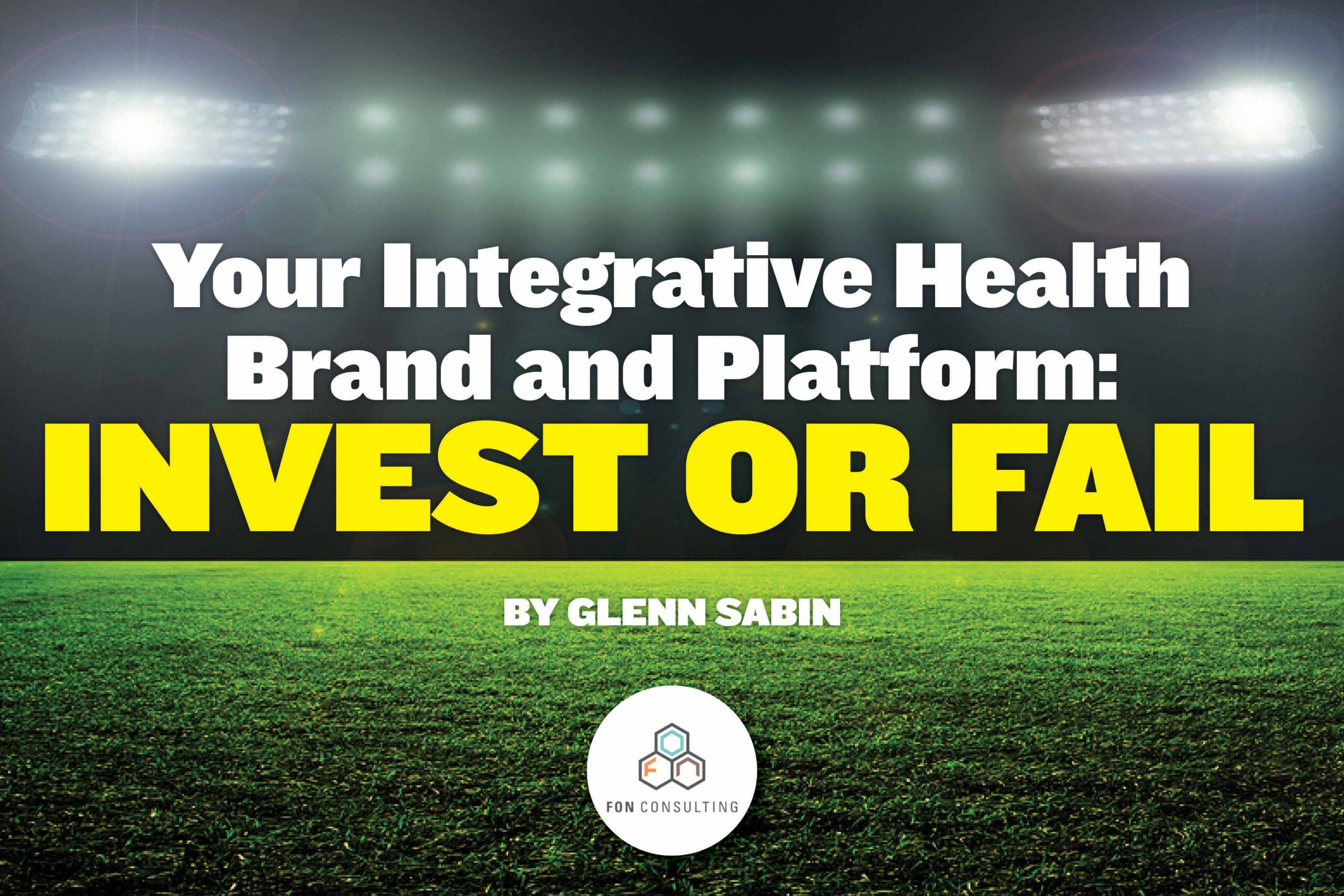
Whether you mainly trade on your personal brand or lead an organization, sustainable success is wholly dependent on relationships. It’s based on your reputation in the market, how your brand is differentiated, and how you make people feel.
Your processes, sales-savvy, or technological prowess alone will not guarantee your success; if you solely rely on tools and process, your empty enterprise will ultimately fail.
Don’t get me wrong: your systems and processes are important. So is your logo, enterprise name, tagline—even the typography, colors, and design aesthetic are critically important (we’ll talk about these vital elements of your platform in a few minutes). But all that stuff means nothing if you somehow skimp on the brand fundamentals.
Your Brand DNA = Your Voice, Not Your Logo
A winning, sustainable brand is founded on this essential shortlist. Your success is dependent upon:
How you make others feel.
The genuine emotional connection you create with patients/customers/prospects… (ideally based on empathetic problem/solution approach).
Your authentic voice: consistently communicating, in tone and timbre, within and outside of the enterprise.
What others say about you when you aren’t in the room. (Jeff Bezos, Amazon.)
Doing the ‘hard things’ well.
Consistently over-delivering.
Gaining trust via meaningful engagement, long before asking for the sale.
Storytelling: Why you do the things you do. The story behind why your company (product and/or service) exists, how it serves others, and why folks should care.
[Questions you must honestly answer regarding your personal integrative health brand can be found here.]
Foundational Matters
If you don’t carefully consider the aforementioned imperatives of your brand before naming it, making hires, securing space (virtual or physical), or developing the necessary aesthetic and digital platform, and related accoutrements, then you are building on shallow ground.
People will quickly see this.
If yours is an existing enterprise or organization, it is never too late for a course-correction… until it is. So read on.
Brand Versus Commodity
What are you trading on? How are you different?
If you want people to pay attention and patronize your business, then get known for doing one thing exceptionally well. Better than anyone else. Become the bona fide expert, the go-to guru for that one thing.
Go deep into this one thing; get real traction, then go wide(r) by emphasizing your next program, product, course or service, with the same focus, energy, and passion you invested in your first ‘one thing’.
Without clear differentiation in a crowded market, your brand is just a commodity. Commodities are sold on price. The very minute you sell on price, you’re in a race to the bottom—and that never ends well.
Noise, Tools, Scalability, Automation
I have nothing against leveraging technology to streamline processes and create efficiency and scale. These are good things. I use them for FON and my personal brand.
However, the integrative space is getting crowded as more practitioners, clinics, dietary supplement manufacturers, digital health platforms, and others enter the fray and jockey for position to reach growing consumer demand for products, programs, and clinical services.
It’s gotten noisier for integrative health and functional medicine business professionals, with myriad ‘set it and forget it’ programs and courses that proclaim to cover every important aspect of building or growing an integrative/functional enterprise (or personal brand) over just a few months.
These business-building teachings, along with hand-holding and, mostly meaningful, cajoling, do not last in perpetuity. The biggest problem I see for the delivery method of ‘one-to-many’ (as opposed to one-on-one) course and program builders is the lack of true brand positioning discussions, and development activities, provided to these mostly fledgling businesses.
Owning a niche is important and smart. It is imperative to have the correct technology, tools, and processes in place. However, it’s the lack of foundational brand, and brand-building elements to support an enterprise, that stokes my fear of the commoditization of integrative health and functional medicine enterprises.
Core Platform Must-Haves
Your platform needs to support your unique and compelling brand, comprising a multitude of essential digital and non-digital features.
If your personal integrative or functional brand or enterprise embodies (or aspires to embody) much of the aforementioned essential brand attributes, but fails to invest in a comprehensive, high quality, modern brand platform, it will fail to take flight.
Regardless of whether your organization is nonprofit or for-profit—a small practice, hospital, health system, nutraceutical company, or digital health platform—you must consistently invest in the necessary work that effectively aligns your unique brand attributes with your overarching business development, marketing, and sales goals.
The following is not meant to be an all-encompassing list; your brand’s ethos, specific needs and goals must be taken into consideration. However, these are the essential brand platform and marketing aspects you need to pay attention to:
- Quality brand identity. Take into account logo (brand mark), tagline (if necessary), with carefully considered type and color palette, and brand guidelines for how it should be used—it should be scalable (legible in smaller sizes), created as a horizontal and vertical iteration, in color and greyscale.
- Brand Consistency! This is necessary not just for your site and all collateral, but also your social media profiles, directory profiles, Google Business Profile, Bing, Yelp—essentially, everywhere your brand is featured and accessed. Your brand elements include: name, logo, address, phone, site, physical address (as applicable), email address, core images, core messaging, biosketches and business descriptions.
- Modern, Scrolling, Website (my preference is WordPress). This should not be a DIY process; work with a seasoned, professional agency that can show documented success and provide plenty of references. Go through the appropriate process to develop brand positioning statement (encompassing your unique selling proposition), brand ID (see above), customer avatars, copy, calls-to-action, customer funnel, and more, further elucidated below.
- Tight Copywriting. Your content must ‘sing’. It must be in perfect pitch and well executed to help ensure high conversion of prospects to customers: static website content (core navigation areas), pithy and impactful messaging, well-placed calls-to-action, ‘email drip’ letter campaign content artfully taking prospects through a funnel. Don’t forget your sales collateral, forms, sales and products brochure which all support your brand. It must ‘speak’ with an even, cohesive tone—your brand’s established voice. Words are powerful, and should be custom crafted by a skilled wordsmith who has, or can quickly gain, subject matter knowledge on the integrative health space and your unique brand attributes, and your target customers.
- Email Marketing System. I like MailChimp, Flodesk, and Ontraport. Make sure your customized email templates (e.g., newsletter, promotional) are on brand and nail the calls-to-action.
- CRM—Customer Relationship Management. The more efficiently a business can manage its relationships, the more successful it will become. A CRM’s primary role is to learn more about customers’ needs and behaviors in order to develop stronger relationships with them. CRMs can integrate email marketing systems, various databases, lead capture, and website landing pages. There are free and paid options. Of note, Keap, Salesforce.com and HubSpot are among the larger, quality paid options that are quite robust and customizable.
- Search Engine Optimization. SEO, as compared to various paid activities (digital, radio, print) becomes an evergreen investment, in that once a site is ranking high in organic search, and a consistent investment is made to keep it that way, it pays dividends over time. The SEO landscape is constantly changing, with Google’s algorithm operating mostly under a cloak of secrecy. AI has added an additional layer of complexity and unknown. SEO is critical to a company’s long-term success, and must not ignored. Check out this cutting-edge modern SEO checklist.
- Organic Social Media. Even though today’s social media platforms largely require ‘pay to play’—spending on boosting posts and ads in order to reach your full audience and more broadly—a smart, consistent organic social strategy is still important for most businesses. As noted earlier, make sure your brand elements and brand voice is consistently applied across your static profile information and post content itself.
- Paid Search, and Social Media Advertising. I am a fan of paid search/PPC (pay-per-click) and paid advertising, especially so when a company is young and needs quick growth. I advocate for small tests, ongoing measuring and optimization—you find out what works (and what fails) and exploit that. For me, there is always a role for carefully managed paid search and digital advertising as an important marketing prong to complement other activities. What I do not like is a dependency on paid search and advertising as sole channels, because unlike a smart SEO investment, leads from paid activities dry up as soon as the campaign stops.
- Content Marketing Strategy. For creation and promotion. Brands that do not incorporate a publishing strategy for their website are left with static ‘advertising’. Quality content, consistently delivered, engages prospective clients and patients. It builds trust around your brand. It drives organic traffic to your site, and it serves as the nucleus of your client/patient sales funnel. FON’s blog contains many articles and how-to guides specific to content creation and dissemination.
- Google Analytics and Google Search Console. Because you cannot optimize what you cannot measure… Setting up Google Analytics (GA) provides a terrific snapshot of traffic volume, time on site, how people navigate your site. Google Search Console (GSC) provides critical data on specific search keywords your site is ranking for. Importantly, GSC allows you to see the top keywords that your competitors are ranking for. The functionality for both GA (current version is called GA4) and GSC are vast, with myriad ways to query data and generate reports.
- Don’t Forget Nondigital Activities… for brand-building, marketing, and driving word-of-mouth referrals.
Don’t Be Penny-Wise and Pound Foolish
You are ideally selling through customer (or patient) engagement, problem-solving, and being unfailingly helpful. You are in the integrative healthcare space—a relatively novel space that is more in demand than ever. You are also influencing people to change their behavior, invest in products and/or services that provide sensible solutions to their health concerns, and to support their overall wellness.
So how can you possibly skimp on the creation of your platform when your business is connected to the most important and serious aspect of most people’s lives: their health? Don’t expect prospective customers to patronize your business, and purchase your products and services, based on your previous successes, personal bona fides, or your resume or CV.
Measure Twice, Cut Once
It’s paramount for each brand’s (clinic, company, organization) platform, therefore its development strategy, to be carefully crafted and flawlessly executed.
The all-too-common mistake made by integrative health and functional medicine entrepreneurs is in choosing the cookie-cutter approach to brand platform development. I see it all the time and, because one size does not fit all, the entrepreneur ends up with a combination of: a hodge-podge of interconnected elements that are ‘off-brand’ (not achieving a consistent aesthetic or tone); a project worked on by several agencies or freelancers, over an extended period of time; poor or uneven execution.
Like your (ideally) well-differentiated brand itself, there is no one-size-fits-all approach to developing an effective platform. Are there best practices? Absolutely. But, in order to achieve meaningful traction and get impact, your core platform elements must be customized to your unique brand voice and mission.
Do it right, at the start—at launch or as part of your redevelopment strategy—or go home.
Commit Fully. Invest Wisely. Amortize over Five Years
Many business leaders do not fully know what should comprise their platform; or they have a decent idea, but implement only select pieces, and often on-the-cheap—with some notion in mind that they will circle back to revisit the ‘voids’ once they are generating enough cash-flow. They piece things together and perpetually fix, redesign, rewrite, redo. Is this you?
If you do not budget and invest in the core aspects of your brand and platform, in unison, and upfront, you are ultimately impeding your cash-flow and disadvantaging your enterprise right out of the gate.
Though you will actually pay for third-party vendors (or in-house human resources) within, say, three months of launching a project, you must think about your investment over a five-year period. Spread out or amortize the total investment by dividing it by five. That’s a much more comfortable number to deal with.
Approaching your brand and platform at a high level will provide dividends for years to come. Though technology evolves, and your site and platform elements will need to be updated and augmented, your established identity, website, and other foundational aspects of your platform will serve you well for years to come.
Takeaways
- Your brand and market positioning statement should come before all else.
- Do not make the mistake of overreliance on technology, tools, processes, and sales funnels, over the foundational work of branding and building meaningful relationships.
- When building your brand, base it on targeted (customer/prospect) engagement and being helpful, while being very careful with how and when you ‘sell’.
- Make the proper, up-front investment in your brand and platform, and amortize (while measuring ROI) over five years. In other words, if you skimp and look for shortcuts it will be easy to tell, and you will face long odds in being successful in the integrative and functional medicine space.
About FON
FON is a leading integrative health and medicine business development and strategy consulting firm. FON specializes in custom solutions for growing patient volume, developing programs, and increasing product sales. Our practical business models are driven by innovative marketing, clear messaging, and customer engagement via branded storytelling.
Contact us today to schedule a complimentary 30-minute consultation to discuss your business development or personal brand needs.

Read Glenn’s story.






